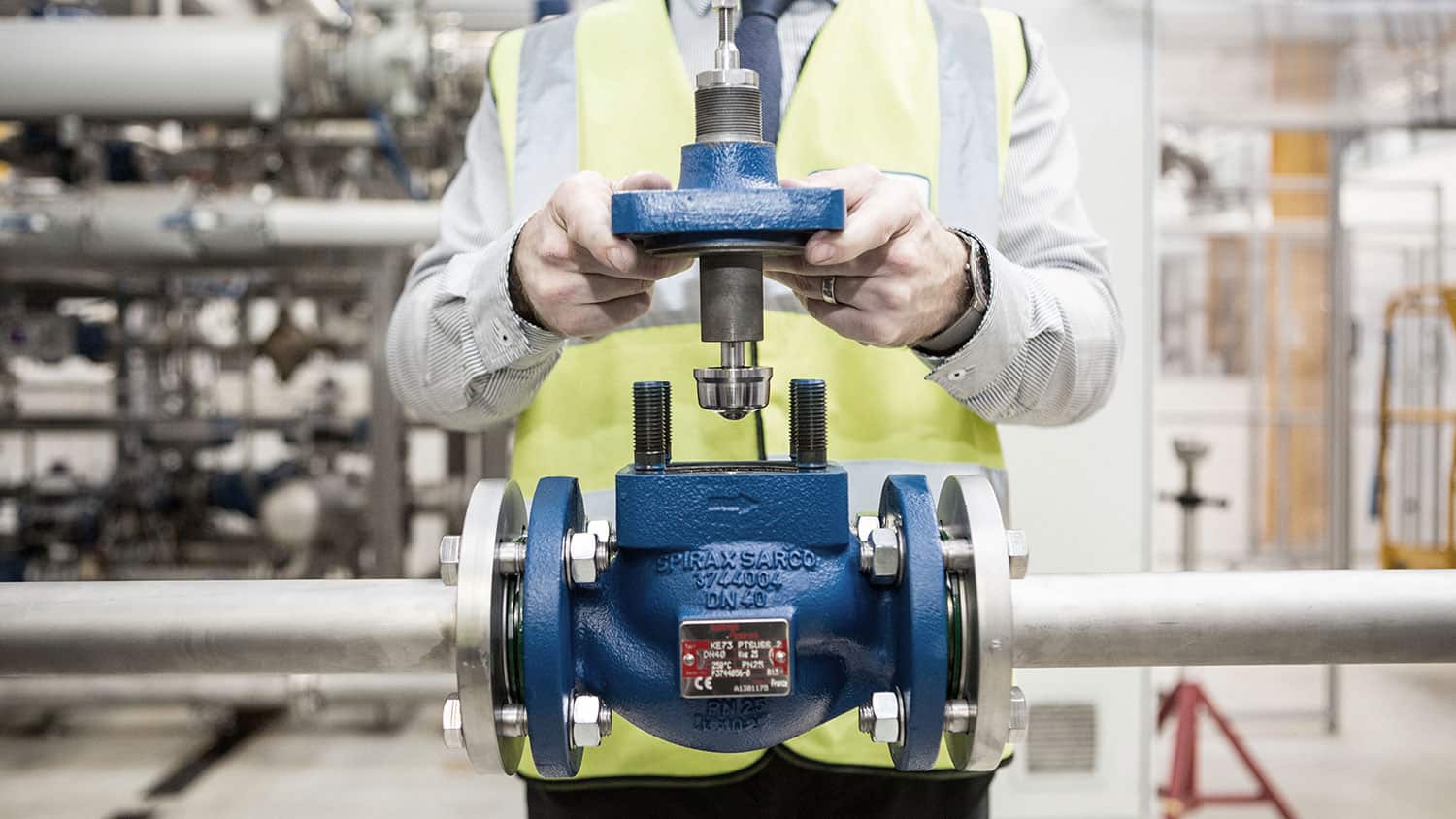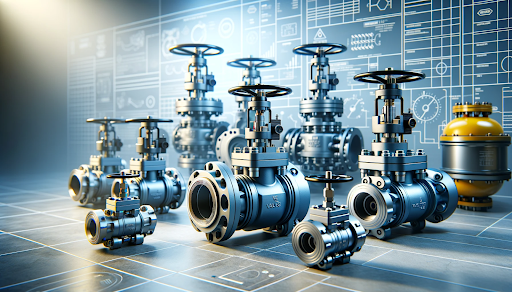How Control Valves Impact Energy Performance in Industrial Settings
How Control Valves Impact Energy Performance in Industrial Settings
Blog Article

Maximize Power Cost Savings and Comfort With Advanced Structure Automation Controls
In the realm of contemporary design and center administration, the integration of advanced building automation regulates stands as an essential advancement. The merging of innovation and sustainability has birthed a brand-new period where energy effectiveness, convenience optimization, and functional streamlining are no much longer attainable facts however remote desires. By taking advantage of the power of automation, structures can adapt, react, and evolve in means that were once unthinkable. The potential for considerable energy savings and enhanced convenience is not simply a pledge but a possibility waiting to be fulfilled. This standard change in structure administration holds the vital to opening a world where ecological conscientiousness and owner health harmoniously exist side-by-side within the wall surfaces of our frameworks.
Power Effectiveness Benefits
Energy performance benefits can considerably reduce power consumption and operational costs in structures. By carrying out energy-efficient practices and modern technologies, building owners and operators can achieve substantial cost savings while likewise adding to ecological sustainability. One of the main advantages of enhancing energy performance in structures is the reduction of energy costs. Energy-efficient systems, such as advanced structure automation controls, can enhance using resources like lighting, heating, and cooling, causing lower power expenses gradually.
In addition, enhanced power performance can lengthen the life-span of structure equipment and systems. By running extra effectively, a/c systems, light, and various other building parts experience much less wear and tear, causing minimized upkeep and substitute costs. In addition, energy-efficient buildings usually command higher property worths and rental rates, supplying lasting economic advantages to proprietors.
Additionally, energy efficiency can enhance owner convenience and efficiency. Effectively managed indoor environments with ideal illumination and thermal problems develop a more enjoyable and helpful work space, resulting in boosted worker contentment and efficiency. Generally, the energy efficiency benefits related to sophisticated building automation controls are multifaceted, including cost savings, ecological stewardship, and occupant health.
Improved Comfort Control
Enhancing convenience control in structure atmospheres calls for an innovative assimilation of sophisticated automation systems for ideal owner well-being. By making use of advanced building automation controls, facilities can tailor the interior atmosphere to meet the particular demands and preferences of owners. These systems make it possible for specific policy of air flow, illumination, and temperature, developing a comfy and effective ambience. Resident contentment and efficiency are very closely connected to thermal comfort, making it important to have systems in location that can adapt to transforming conditions in real-time.
By including these advanced controls, buildings can not just boost comfort yet additionally improve power performance by maximizing system procedures based on actual tenancy and usage patterns. Inevitably, focusing on occupant convenience through innovative automation systems leads to an extra satisfying and healthier indoor atmosphere.
Functional Efficiency Improvements

In addition, the application of real-time monitoring and analytics devices makes it possible for building drivers to determine energy inadequacies and operational anomalies quickly. By continually monitoring energy usage patterns and system efficiency metrics, modifications can be made in real-time to optimize energy consumption and make certain peak functional effectiveness. control valves. In addition, including need reaction methods into structure automation controls can further enhance operational effectiveness by dynamically adjusting energy usage based on grid problems and pricing signals
Indoor Environment Optimization
Efficient interior climate optimization is a fundamental facet of structure automation controls, ensuring residents' comfort and well-being while taking full advantage of energy financial savings. By utilizing sophisticated sensing units and controls, constructing automation systems can continuously adjust and keep track of temperature level, moisture levels, air high quality, and ventilation to produce an optimal indoor atmosphere. Maintaining constant and comfy problems not just enhances passenger complete satisfaction yet likewise improves performance and total health.
Interior environment optimization additionally plays a crucial function in power performance. By fine-tuning heating, air flow, and air conditioning systems based on real-time data and tenancy patterns, building automation controls can dramatically lower power consumption - control valves. As an example, implementing methods such as demand-controlled ventilation and thermal zoning can help minimize power waste while making certain that each area of the building obtains the necessary conditioning.

Lasting Environment Development
Building automation controls not just optimize indoor environment conditions for power performance and occupant comfort but additionally lay the foundation for producing a lasting atmosphere through critical management of resources and systems. By incorporating innovative structure automation technologies, such as sensing units, actuators, and intelligent check my site software, facilities can adjust and monitor energy use in real-time to lessen waste and minimize their carbon footprint. These systems make it possible for predictive maintenance, determining possible problems before they escalate and enhancing equipment performance to improve durability and performance.
Moreover, sustainable setting creation expands past power administration to include water preservation, waste decrease, and interior air top helpful hints quality renovation. Structure automation controls can manage water use, discover leaks, and guarantee proper waste disposal methods, adding to general sustainability efforts. In addition, by regulating and keeping track of air flow and filtering systems, these modern technologies boost passenger health and productivity while lowering energy consumption connected with HVAC procedures.
Final Thought
In verdict, advanced structure automation regulates deal significant benefits in regards to power cost savings, comfort control, functional efficiency, indoor environment optimization, and creating a lasting setting. By implementing these controls, structures can achieve optimal efficiency while minimizing energy consumption and boosting passenger comfort. It appears that using innovative automation innovation is essential in boosting structure performance and creating a more lasting future.
Power effectiveness benefits can significantly decrease power usage and functional prices in structures. Overall, the power performance advantages linked with advanced structure automation controls are multifaceted, including price savings, environmental stewardship, and resident health.
Furthermore, integrating need reaction methods into structure automation controls can additionally boost functional effectiveness by dynamically changing energy use based on grid problems and prices signals.
Building automation regulates not only maximize interior environment conditions for power effectiveness and passenger convenience however also lay the foundation for producing a sustainable atmosphere via critical management of systems and resources.In verdict, progressed building automation find out controls offer significant benefits in terms of energy savings, comfort control, functional effectiveness, interior climate optimization, and creating a sustainable environment.
Report this page